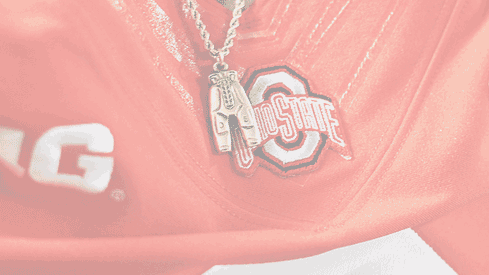Ohio State beats Purdue 34-10 and improves to 9-0 on the season.
Bill Connelly over at SBNation has a site called Football Study Hall (advanced stats for college football), and they updated their preseason projections last week that they had previously done back in February right after signing day. Their preseason formula includes three primary factors: 1) Returning Production; 2) Recruiting; 3) Recent History.
The one back in February had the Buckeyes at number 2, but the healthy return of Derwin James to Florida State gave them just enough bump to slide into the number 2 spot (we were basically tied then and still are basically now). The number is a good gauge on essentially what, based on the rankings, you could figure out a Vegas spread might be listed at or near. For instance, Alabama is at 33.9 and Florida State is at 26, so these rankings give Bama a 7.9 point edge on a neutral field. Vegas has it listed anywhere from 5-7 this weekend in favor of Bama. If we played FSU on a neutral field, it would be a "pick em" game (these have us as 19.5 better than Indiana on a neutral field and the line is 20-21).
The preseason projections are going to be the least accurate, since there is always turnover and new faces that step up each year. But, as the season goes on they typically become more and more indicative of teams and their relative strengths/weaknesses. They update throughout the season, but after about week 6 or 7, when they have enough data on this year's teams, the rankings and projections become more and more accurate as they start to remove preseason projections and bias and replace them with actual performance data from this year's teams. The past few years, Navy has done a great weekly series featuring these (and the more comprehensive F/+ Combined Ratings). I hope he's planning on it again.
There are 9 teams that have a top-20 ranking on both offense and defense (Bama, FSU, OSU, LSU, USC, Auburn, Penn St, Washington, and Louisville). History has usually shown that the balanced teams are the ones that win championships and/or make the CFP. Notre Dame falls just outside of that criteria, and a couple of other big teams (OU, Mich, Wisc, Stanford, Clemson, Florida, OkSt) have a top-10 unit on one side of the ball, and below 25th on the other.
It has seemed obvious that Vegas and the CFP Selection Committee uses information like this in their lines/rankings (another ranking that uses advanced data is ESPN's FPI). So I have grown to monitor and appreciate the rankings for what they are able to do: remove all human bias and simply use data and performance to give us a better idea of who the best teams are and how they stack up against each other.
